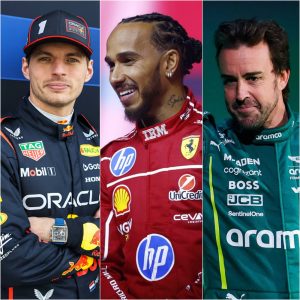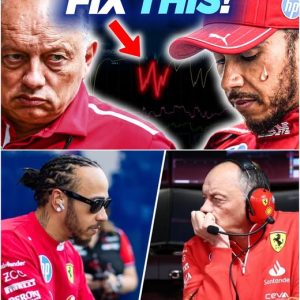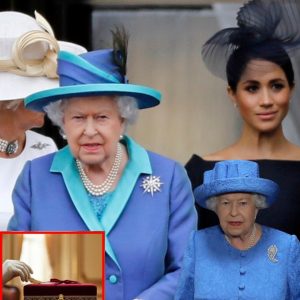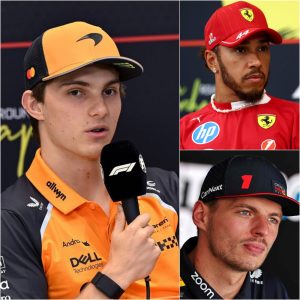In the high-octane world of Formula 1, where every fraction of a second can mean the difference between victory and defeat, the driver market is a theater of its own, filled with ambition, strategy, and high-stakes gambles.
This season, the drama has been amplified by two of the most significant moves in recent memory: Carlos Sainz’s audacious bet on a resurgent Williams and Lewis Hamilton’s blockbuster transition to the iconic scarlet of Ferrari.
These are not mere team changes; they are career-defining decisions that will reverberate through the paddock for years to come.

Carlos Sainz, a driver known for his intelligence, consistency, and fierce competitive spirit, found himself at a career crossroads after Ferrari announced the signing of Lewis Hamilton for the 2025 season. The Spaniard, a race winner with the Prancing Horse, was suddenly the odd man out, a highly sought-after free agent in a whirlwind of speculation. After months of rumors linking him to top teams, Sainz made a choice that stunned many: he would be joining Williams, a team with a storied past but a challenging present.
On the surface, the move from the race-winning Ferrari to the back-of-the-grid Williams seems like a significant step down. However, Sainz’s decision is a masterclass in long-term strategic thinking, a calculated gamble on the sweeping regulation changes set to redefine Formula 1 in 2026. “This decision is not for 2025,” Sainz has been quoted as saying, “it’s for 2026, 2027, and 2028.” His eyes are firmly on the prize, and he believes Williams is the dark horse that will gallop to the front of the pack.
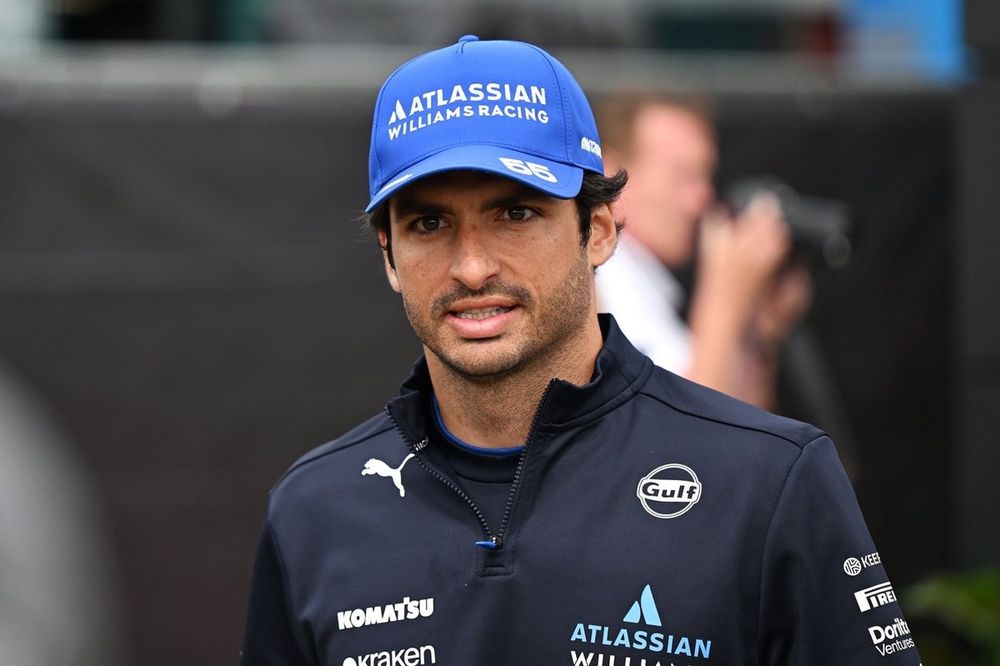
The 2026 regulations will see a complete overhaul of the power units, with a greater emphasis on electrical power and sustainable fuels. The chassis and aerodynamics will also be redesigned to promote closer racing. This reset presents a golden opportunity for teams to leapfrog the competition, and Sainz is banking on Williams, powered by Mercedes engines, to get it right. The whispers in the paddock suggest that Mercedes is poised to have the most potent power unit in 2026, a tantalizing prospect for a team like Williams.
Sainz’s confidence in the Williams project is palpable. He has spoken of the team’s investment, its ambitious leadership under James Vowles, and the hunger for success that permeates the factory in Grove. He sees a team on an upward trajectory, a sleeping giant ready to be awakened. In a sport where timing is everything, Sainz is betting that he has timed his move to perfection, that he will be at the heart of a revitalized Williams, ready to challenge for championships when the new era of Formula 1 dawns.
While Sainz’s move is a bet on the future, Lewis Hamilton’s transition to Ferrari is a dream realized in the present, a move that has captured the imagination of motorsport fans worldwide. The seven-time world champion, the most successful driver in the history of the sport, has left the familiar embrace of Mercedes to don the legendary red overalls of Ferrari, a team he has long admired.
The pairing of Hamilton and Ferrari is a tantalizing prospect, a union of two of the most iconic names in Formula 1. However, the dream move has not been without its challenges. Ferrari team boss Frédéric Vasseur has been candid about the difficulties Hamilton has faced since joining the Maranello-based squad. Vasseur admitted that both he and Hamilton had underestimated the impact of changing environments, the subtle yet significant differences in culture, communication, and process that can make or break a driver’s performance.
Hamilton has spent the vast majority of his illustrious career with a single team, first McLaren and then the all-conquering Mercedes. He has been the central pillar around which a championship-winning machine has been built. The move to Ferrari has thrust him into a new environment, a new way of working, a new family to integrate with. It is a challenge that should not be underestimated, even for a driver of Hamilton’s caliber.
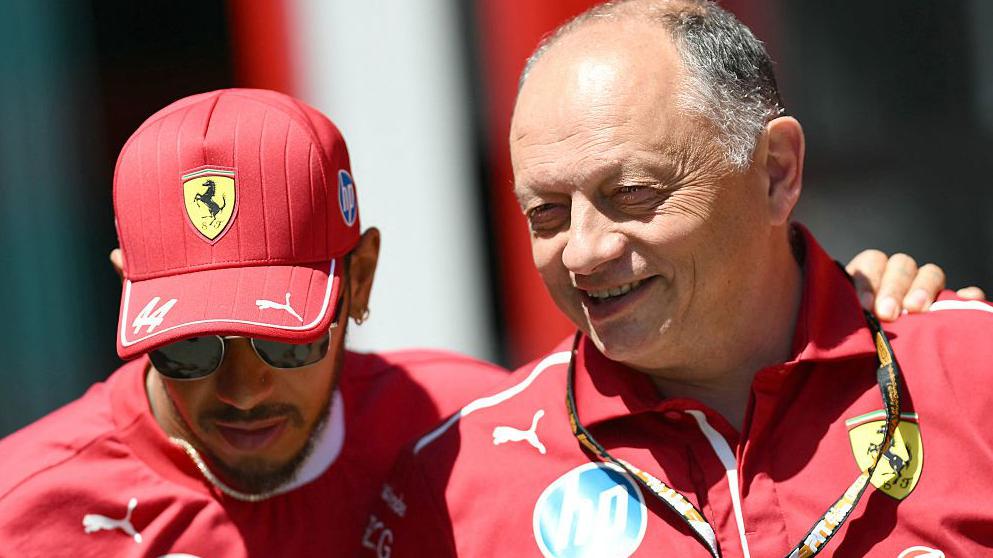
Vasseur’s comments highlight the human element in a sport often dominated by technology and data. A driver is not a machine that can be simply unplugged from one car and plugged into another. They are elite athletes who thrive on familiarity, on the seamless communication and deep-seated trust that is built over years of working with the same engineers, mechanics, and strategists. Hamilton is now in the process of building those relationships at Ferrari, a process that takes time, patience, and a willingness to adapt.
The contrast between Sainz and Hamilton’s situations is stark. Sainz, the driver who has become something of a specialist in adapting to new teams, is once again embracing a new challenge, confident in his ability to integrate and extract the maximum from his new machinery. Hamilton, the long-serving king of Mercedes, is navigating the unfamiliar waters of a new team for the first time in over a decade.
The stories of these two drivers are a fascinating study in the dynamics of a Formula 1 career. Sainz’s journey is a testament to the importance of adaptability and forward-thinking, of seeing the bigger picture and having the courage to take a calculated risk. Hamilton’s is a reminder that even the greatest of all time are not immune to the challenges of change, that success is not just about raw talent but also about the intricate web of human relationships that underpin a championship-winning team.
As the 2025 season approaches, all eyes will be on Sainz at Williams and Hamilton at Ferrari. Will Sainz’s gamble pay off? Will he be able to lay the groundwork for a championship challenge in 2026? And will Hamilton be able to overcome the initial hurdles at Ferrari and add to his already legendary legacy?
The answers to these questions will unfold on the racetracks of the world, in a thrilling new chapter of Formula 1. The stage is set for a captivating spectacle of ambition, adaptation, and the relentless pursuit of glory. The journeys of Carlos Sainz and Lewis Hamilton are a powerful reminder that in the world of Formula 1, the biggest gambles can often lead to the greatest rewards.
